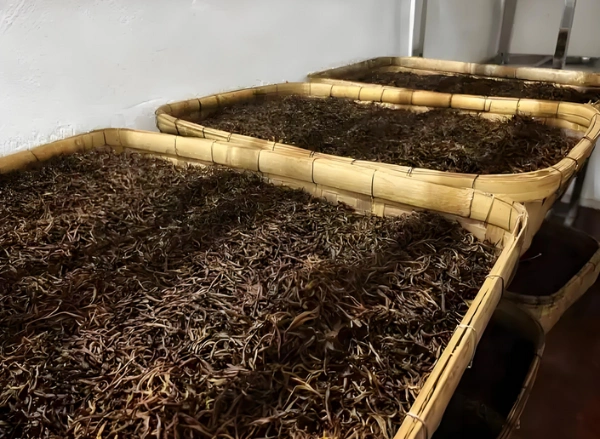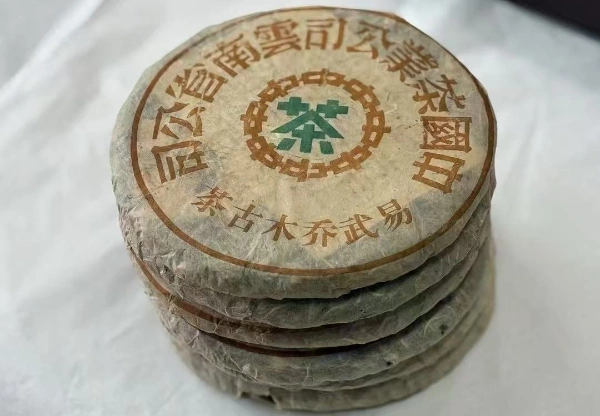Pu erh tea fermentation is nothing short of alchemy, transforming fresh Yunnan tea leaves into complex, soul‑stirring brews. Picture fertile mountain mist clinging to tea gardens, leaves plucked at dawn, then bathed in microbial magic for months or even years. With each sip, you taste earth and orchard fruit entwined, smoke and honey dancing in harmony.
In this deep dive, you’ll journey from raw pu erh tea’s brisk vitality through the transformative “wo dui” that crafts ripe pu erh tea, all the way to the sublime depth of aged pu erh tea. Along the way, we’ll explore key microbes, flavor evolution, health‑boosting byproducts, and savvy brewing and storage tips—arming you to truly appreciate fermentation’s fragrant gift.
1. The Origins of Pu Erh: Yunnan’s Ancient Post‑Fermentation Craft
The story of pu erh begins in Yunnan’s emerald hills, where pu erh tea fermentation was perfected centuries ago by tea masters in Tibet trade caravans. Unlike green or oolong, pu erh undergoes a second life—post‑harvest fermentation—rooted in wartime necessity to preserve and transport tea. Today, two methods prevail:
- Natural Aging: Compressed cakes of raw tea rest in mountain cellars, slowly fermenting over decades.
- Wo Dui (渥堆): An accelerated process where damp piles of tea are turned regularly, heat‑generated, and microbe‑driven, yielding ripe pu erh tea in months instead of years.
This heritage ensures each cake carries Yunnan’s terroir, climate, and microbial community in every fold of leaf.

2. Raw Pu Erh Tea vs. Ripe Pu Erh Tea: The Fermentation Spectrum
At the heart of pu erh tea fermentation lies the contrast between raw and ripe:
- Raw (Sheng) Pu Erh Tea: Leafy, bright, and slightly astringent when young, sheng slowly mellows into honeyed, floral depths.
- Ripe (Shou) Pu Erh Tea: Undergoes intentional microbial proliferation, darkening to mahogany and gaining earthy, cocoa, and smoke notes within 2–6 months.
On your palate, raw pu erh offers vibrant gardenia and green grape notes, while ripe pu erh envelops you in velvety warmth—two ends of a fermented continuum.
3. Microbial Magic: Key Organisms in Pu Erh Fermentation
Fermentation’s artistry is microbial:
- Aspergillus spp.: Kickstarts breakdown of complex polyphenols, generating theabrownins responsible for ripe pu erh’s color and health benefits【1】.
- Rhizopus & Penicillium: Drive aromatic precursors, layering mushroom, camphor, and dried fruit camphene.
- Lactobacillus: Contributes mild acidity, accentuating sweetness and improving gut health support.
These microbes work in concert, unlocking flavors and creating bioactive compounds that differentiate pu erh from any other tea.
4. The Fermentation Process: From “Wo Dui” to Natural Aging
Wo Dui—Accelerated Alchemy
Tea leaves are moistened, piled 1–1.5 m high, and turned every few days. Internal temperatures reach 55–65 °C, optimizing microbial activity. This stage—lasting 40–60 days—yields ripe pu erh tea with its signature depth.
Natural Cellar Aging
Compressed cakes rest in cellars with 60–70% humidity and 20–25 °C. Over 5–30 years, slow enzymatic reactions refine raw pu erh into aged pu erh tea, revealing layered flavors: camphor, dried stone fruit, and honey roast.
Each method—fast or slow—unleashes fermentation’s gifts in distinct, enchanting ways.

5. Flavor Evolution: How Fermentation Creates Complexity
Fermentation transforms:
- Polyphenols → Theabrownins: Initial bitterness softens into gentle sweetness and body.
- Volatile Precursors → Aromatic Esters: Fresh green notes give way to floral, fruity, and smoky nuances.
- Carbohydrates → Organic Acids: Balanced acidity enhances mouthfeel and supports pu erh tea digestion.
One sensory study reported that well‑aged pu erh exhibits over 50 unique aromatic compounds absent in young sheng, underlining fermentation’s role in flavor alchemy .
6. Aged Pu Erh Tea: Timing, Conditions, and Value
Time is pu erh’s secret ingredient. Key guidelines:
- Short‑Term Ripe: 3–6 months ideal for approachable shou pu erh, affordable and forgiving.
- Mid‑Term Aging: 3–10 years of natural cellar aging yields rounded fruit and nut undertones.
- Long‑Term Collectibles: 10–30+ years produces rarities valued for camphor richness and silky finish.
Value correlates with age, storage quality, and origin. Legendary aged pu erh tea from ancient tree gardens commands premium prices in fine tea auctions.
7. Health Benefits Linked to Fermentation By‑Products
Fermentation doesn’t just taste good—it’s healthful:
- Enhanced Antioxidants: Theabrownins exhibit stronger free radical scavenging than raw pu erh polyphenols【2】.
- Digestive Enzymes: Fermentation breaks down tannins, making tea gentler on the stomach and supporting pu erh tea for gut health.
- Metabolic Support: Studies show both raw and ripe pu erh improve lipid metabolism and blood sugar regulation, benefiting weight management and heart health.
These by‑products make pu erh a functional beverage beyond simple pleasure.
8. Brewing Tips to Showcase Fermentation Nuances
To fully appreciate fermentation’s layers:
- Water Temperature:
- Raw Sheng: 90–95 °C to preserve floral top notes.
- Ripe Shou: 95–100 °C to extract depth.
- Leaf-to-Water Ratio: 5 g per 100 ml for optimal strength.
- Multiple Infusions: Short first steeps (10 s), gradually increasing time to unveil evolving flavors.
- Equipment: Gaiwan or small Yixing pot highlights aroma; glass allows visual appreciation of liquor color.
This pu erh tea brewing guide ensures each infusion tells fermentation’s story.

9. Common Pitfalls in Pu Erh Tea Fermentation & Storage
Preservation missteps can derail flavor:
- Over‑Humid Cellars: >75% RH invites mold—maintain 60–70%.
- Improper Ventilation: Stagnant air stifles microbial balance—ensure gentle airflow.
- Sunlight Exposure: UV degrades aroma compounds; always store in dark conditions.
Avoiding these errors protects your pu erh’s integrity and temporal value.
Conclusion: Embracing the Art of Pu Erh Tea Fermentation
Pu erh tea fermentation is a dance of microbe and leaf, time and terroir, science and soul. From the brisk vitality of raw pu erh tea to the velvety embrace of ripe pu erh tea, and the sublime depth of aged pu erh tea, fermentation crafts an ever‑evolving palette of flavors and health benefits. Armed with knowledge of microbial heroes, flavor pathways, and savvy brewing and storage tips, you’re now ready to celebrate every cup as a living legacy of Yunnan’s mountains. Embrace fermentation’s magic—steep, sip, and let pu erh’s alchemy awaken your senses.



